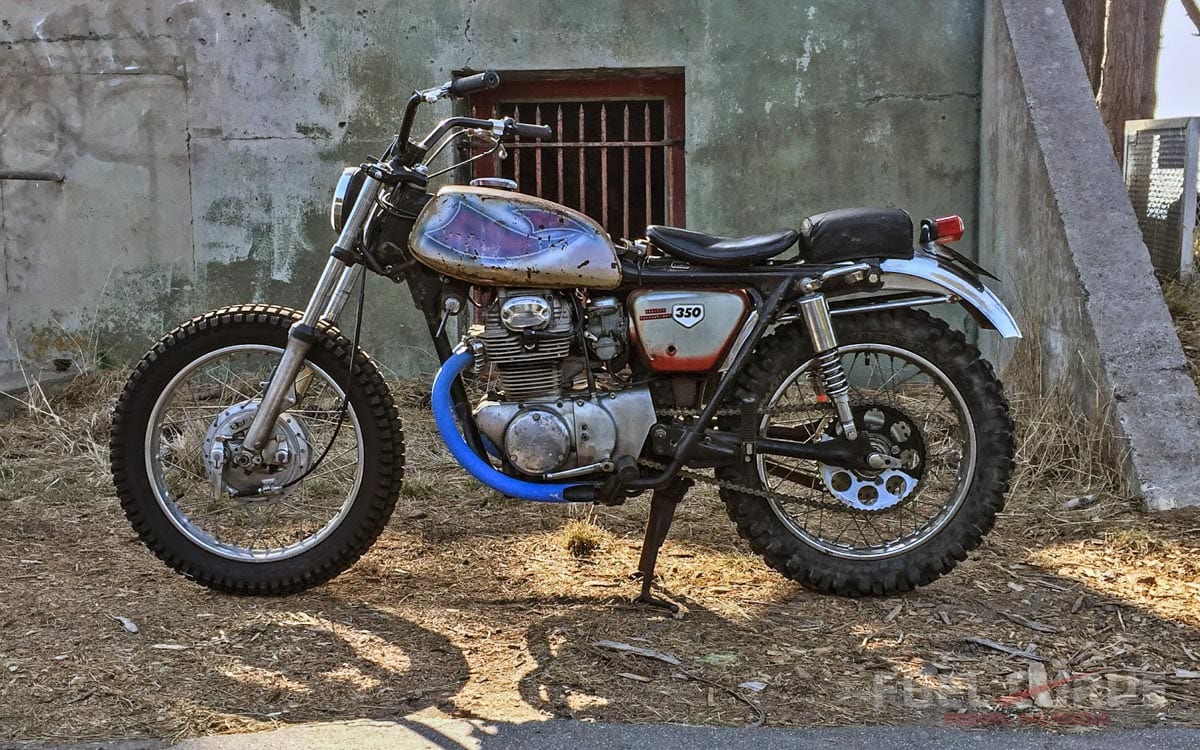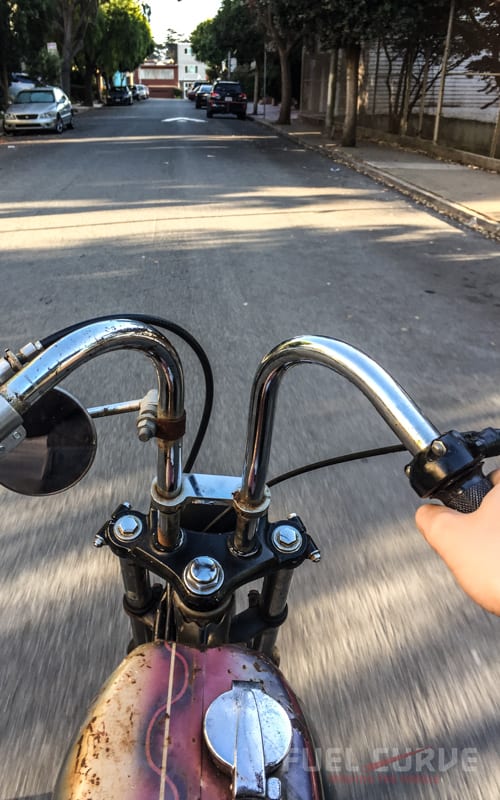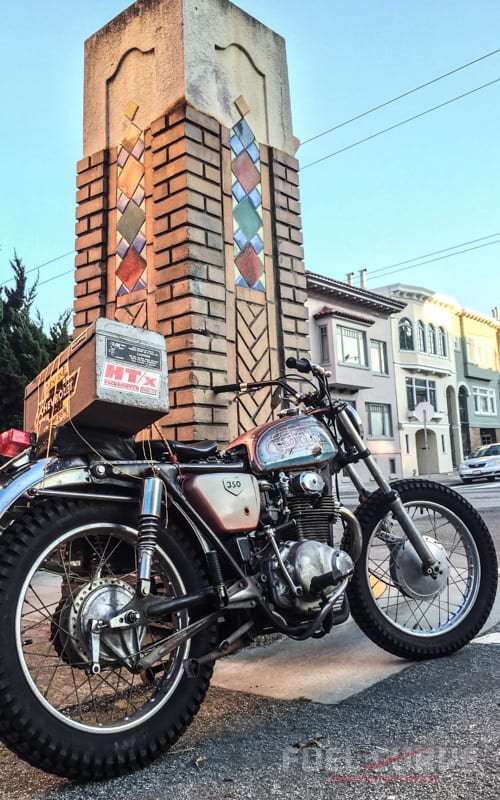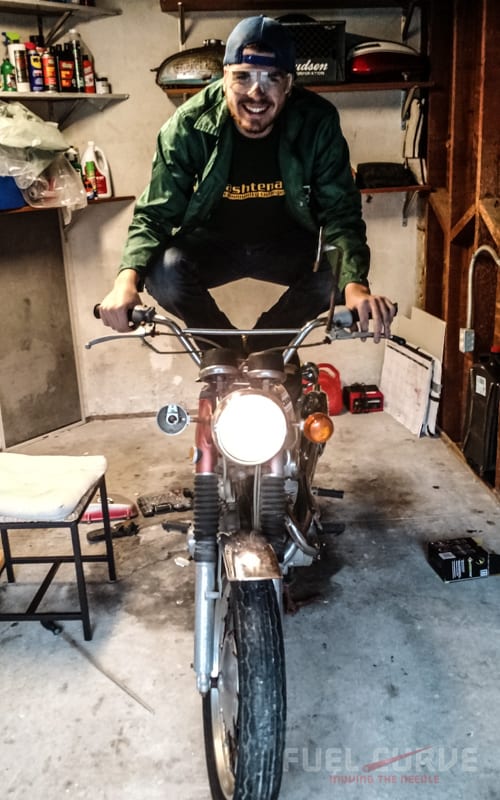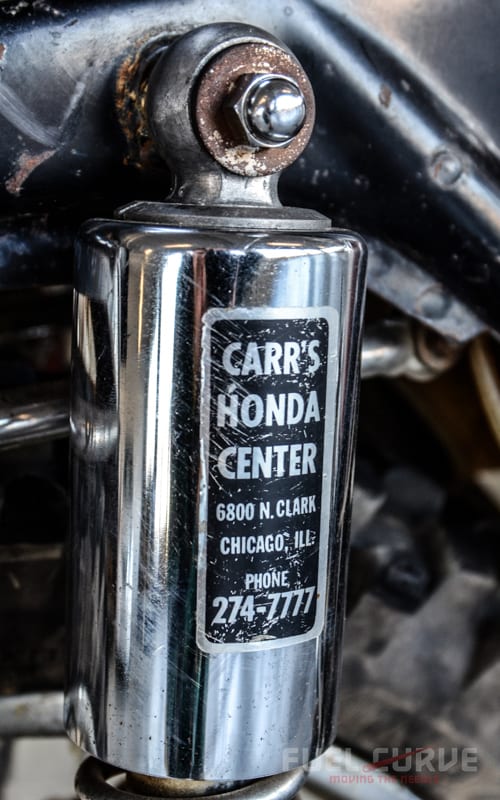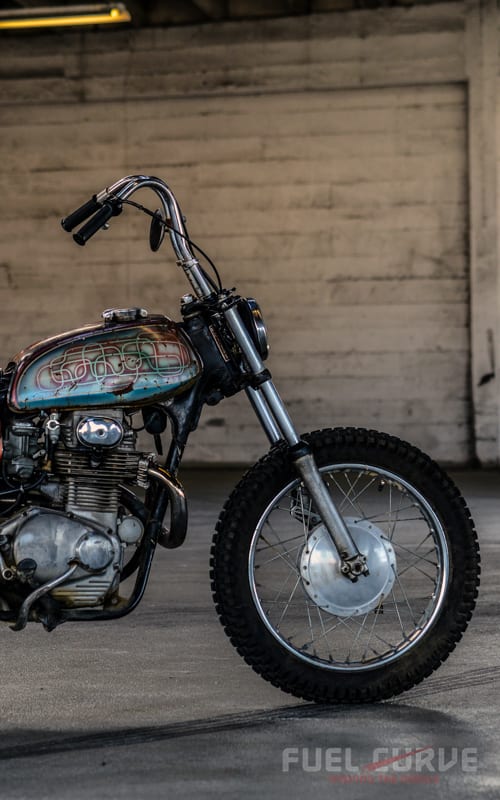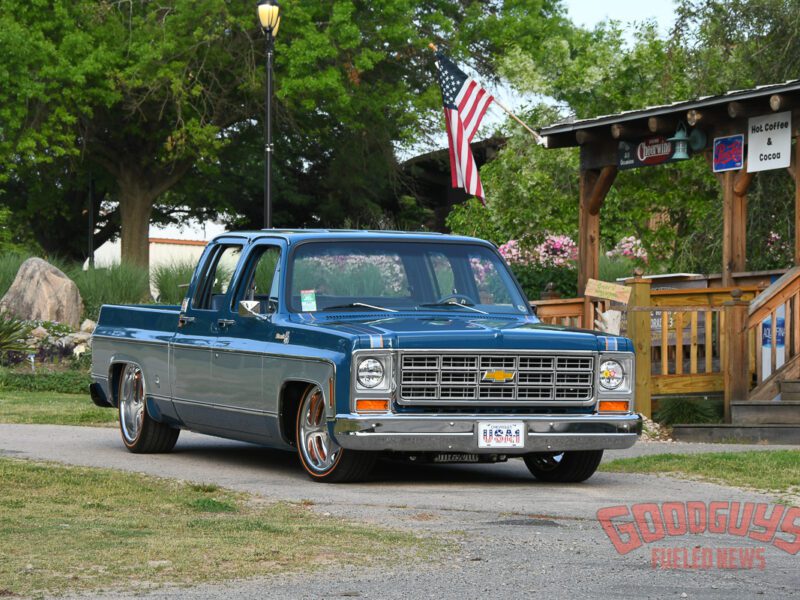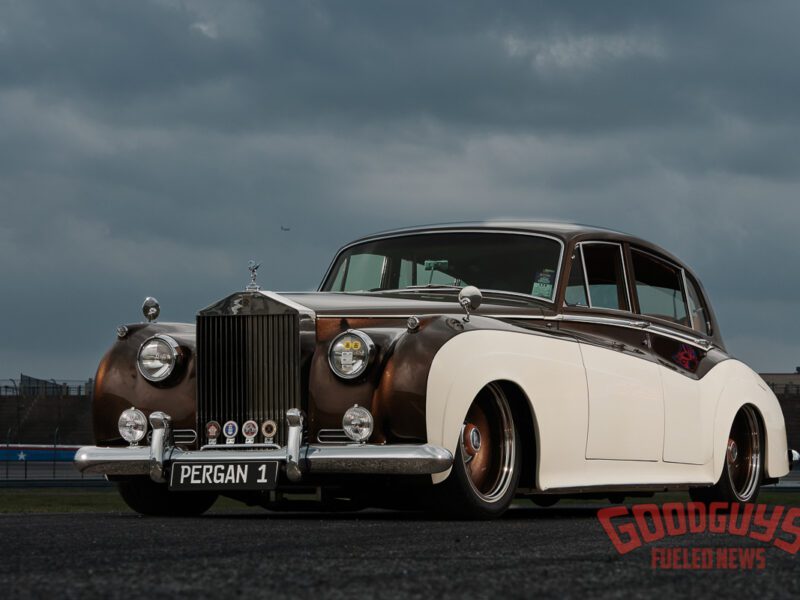1970 Honda CL350 – Project Paperweight
Editor’s Note: Joey Ukrop’s 1970 Honda CL350 “Project Paperweight” is an heirloom bike. Passed from one enthusiast to another then another, it is enjoying a third go around. Joey took some time to document this cool old motorcycle and the path it took to his garage. We are stoked to share Joey’s bike story!

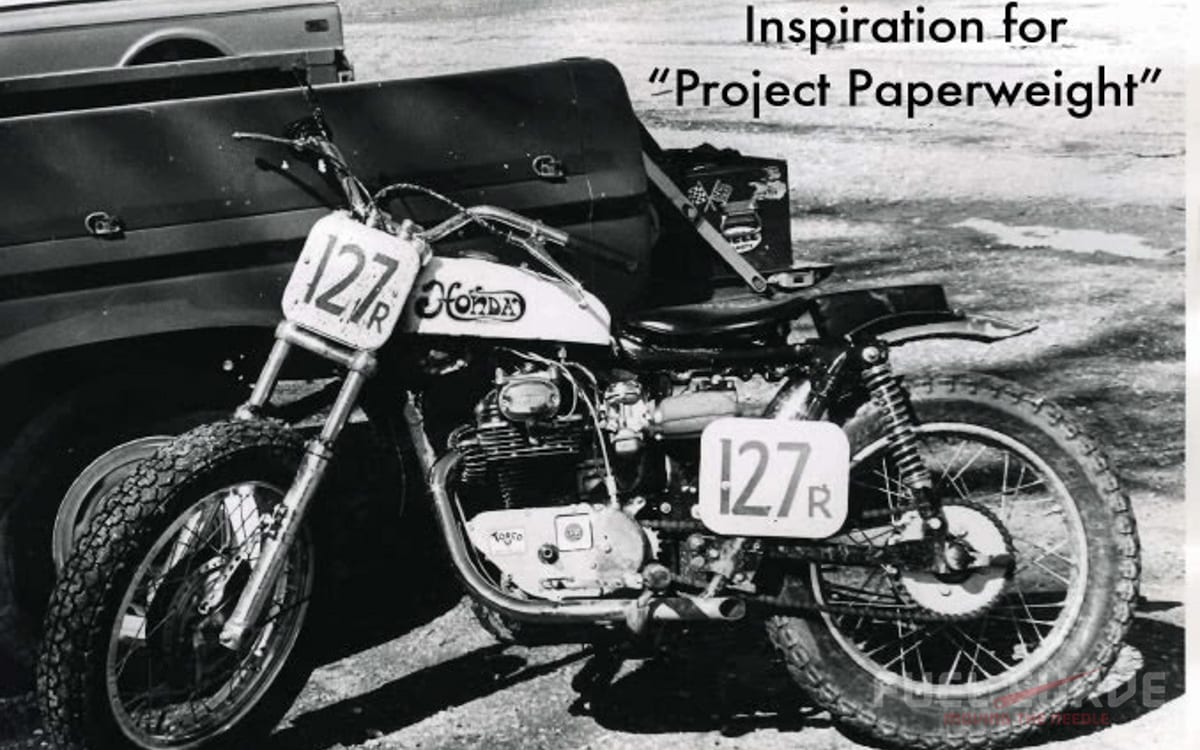 “I don’t know why anybody would want it—it’s just a giant paperweight,” the previous owner’s daughter told me as we stood in her garage on the outskirts of Sacramento on a warm fall morning. We both took a step back to examine the tired, sunbaked Honda CL350 that had been propped against the side of her house for nearly three decades. Looking at the rusted metal, cracking rubber and shredded leather, we saw two very different things. To her, it was her dad’s bike; the one he got from a friend in the early-’70s, rode up and down California, and parked in the late-’80s after a hard crash ended his motorcycling days. It was still his Honda—his Scrambler. But close to 30 years after the fact, he decided it was time to pass it on to a new home. As luck would have it, that home was mine.
“I don’t know why anybody would want it—it’s just a giant paperweight,” the previous owner’s daughter told me as we stood in her garage on the outskirts of Sacramento on a warm fall morning. We both took a step back to examine the tired, sunbaked Honda CL350 that had been propped against the side of her house for nearly three decades. Looking at the rusted metal, cracking rubber and shredded leather, we saw two very different things. To her, it was her dad’s bike; the one he got from a friend in the early-’70s, rode up and down California, and parked in the late-’80s after a hard crash ended his motorcycling days. It was still his Honda—his Scrambler. But close to 30 years after the fact, he decided it was time to pass it on to a new home. As luck would have it, that home was mine.
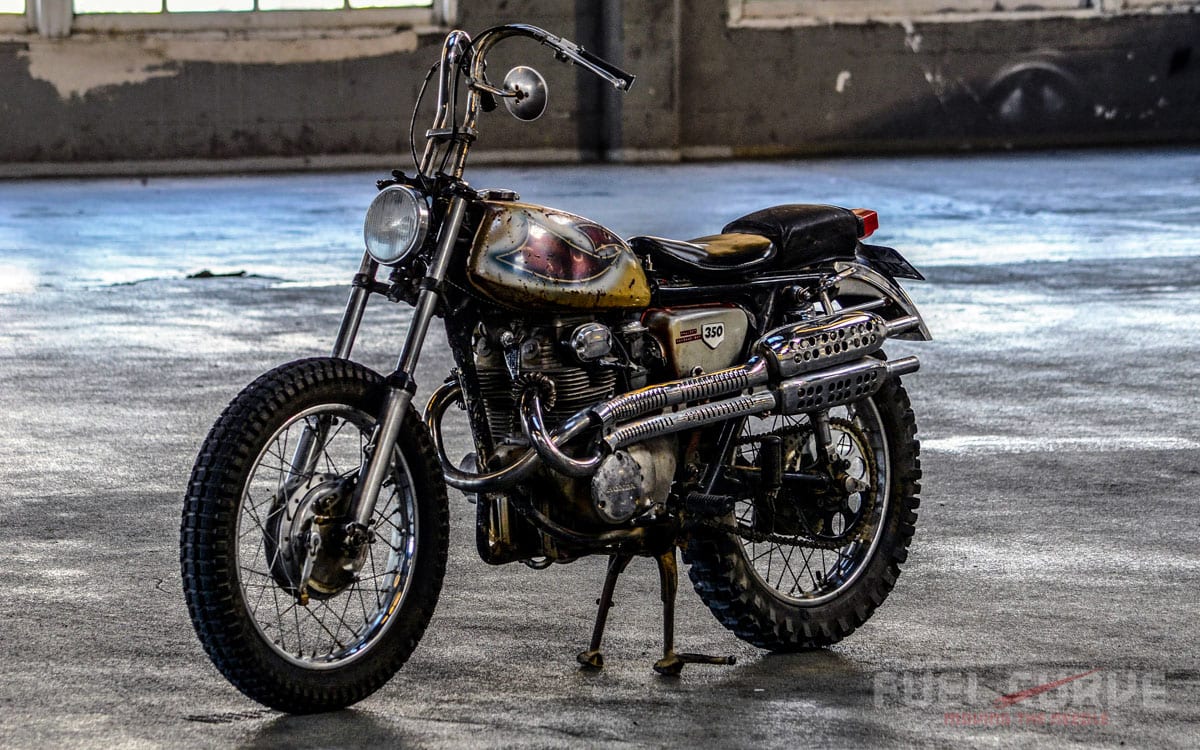
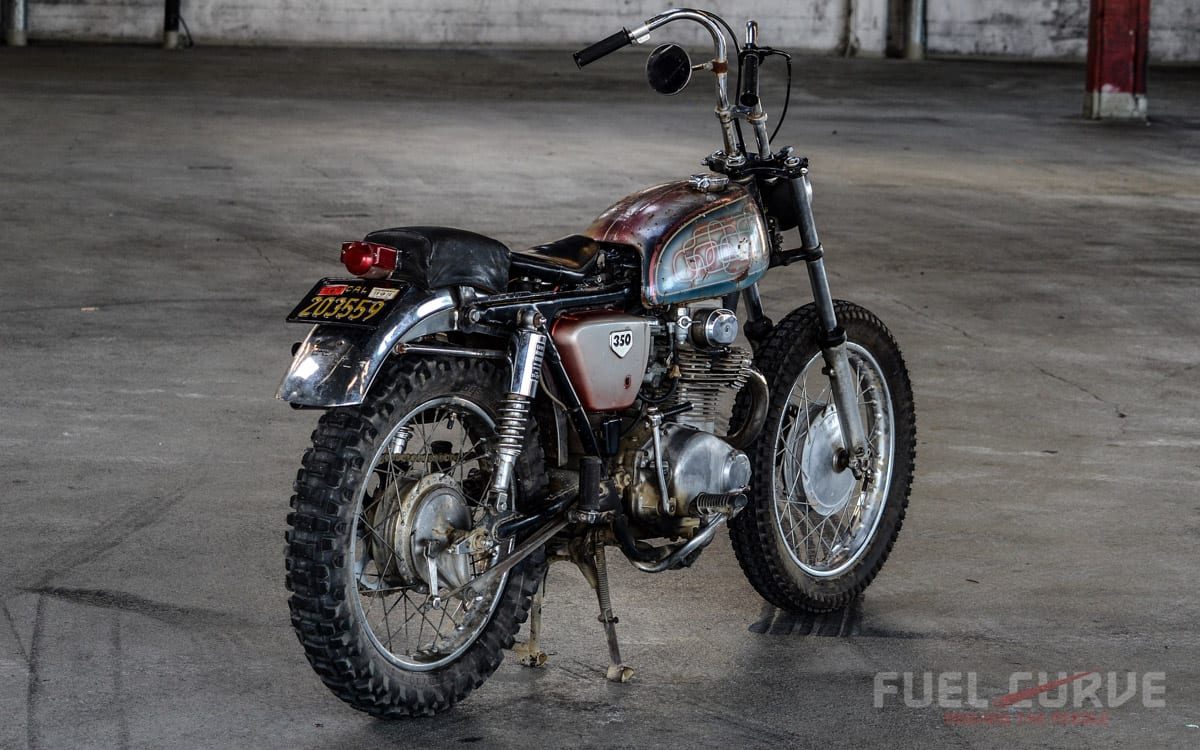 I moved to California in the summer of 2015 to join the The Rodder’s Journal editorial staff. While I was getting settled, my brother sent me an eBay link to a battered, dented and scratched Honda CL350 gas tank that had been treated to a psychedelic Murano pearl paint job in the ’70s. Scallops on one side, endless lines on the other, there was no question that it was once a real conversation piece. We won the auction, and a few weeks later it was in my possession, ready to be reunited with a Honda 350.
I moved to California in the summer of 2015 to join the The Rodder’s Journal editorial staff. While I was getting settled, my brother sent me an eBay link to a battered, dented and scratched Honda CL350 gas tank that had been treated to a psychedelic Murano pearl paint job in the ’70s. Scallops on one side, endless lines on the other, there was no question that it was once a real conversation piece. We won the auction, and a few weeks later it was in my possession, ready to be reunited with a Honda 350.
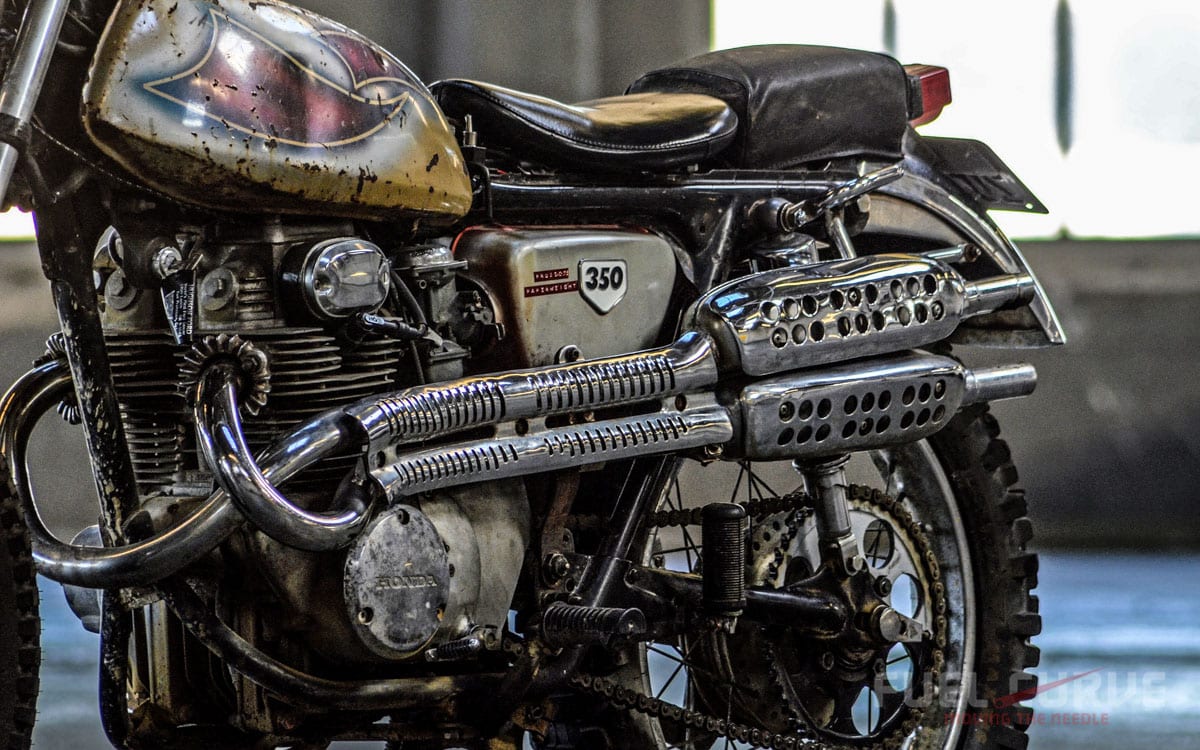 I was riding the bus through San Francisco’s Mission District one night when it hit me: I needed to build a CL350 that would be equally fit for the city streets as it would be for the dirt at Glen Helen Raceway. My brother had recently finished a Triumph T100 that fit that bill, and I knew I could do the same. I pulled out my notebook and started scribbling. The bike would be a mix of flat track and hill climb but would feature an updated electrical system for reliability sake. It would have wide bars, knobby tires, a big rear sprocket, slim headlight, solo seat/P-pad and, yes, that one-of-a-kind gas tank. Nothing fake, nothing faux.
I was riding the bus through San Francisco’s Mission District one night when it hit me: I needed to build a CL350 that would be equally fit for the city streets as it would be for the dirt at Glen Helen Raceway. My brother had recently finished a Triumph T100 that fit that bill, and I knew I could do the same. I pulled out my notebook and started scribbling. The bike would be a mix of flat track and hill climb but would feature an updated electrical system for reliability sake. It would have wide bars, knobby tires, a big rear sprocket, slim headlight, solo seat/P-pad and, yes, that one-of-a-kind gas tank. Nothing fake, nothing faux.
Four months after I laid out that plan, I was driving back from Sacramento with my new-to-me Honda CL350 in the bed of my truck. I rolled it into my garage the Saturday after Thanksgiving, and by New Year’s Eve, it was running strong—much to the neighbors’ chagrin. (Who says late-night fire-ups are a bad idea?) Once the motor was dialed in, I spent the next few months collecting parts and converting the bike into the machine I had envisioned. I worked to incorporate as many original Honda components as possible, like the CL360 front fork, CB360 front wheel, beefier CB750 rear shocks and 48-tooth rear sprocket. It’s amazing how interchangeable so many of these parts are.

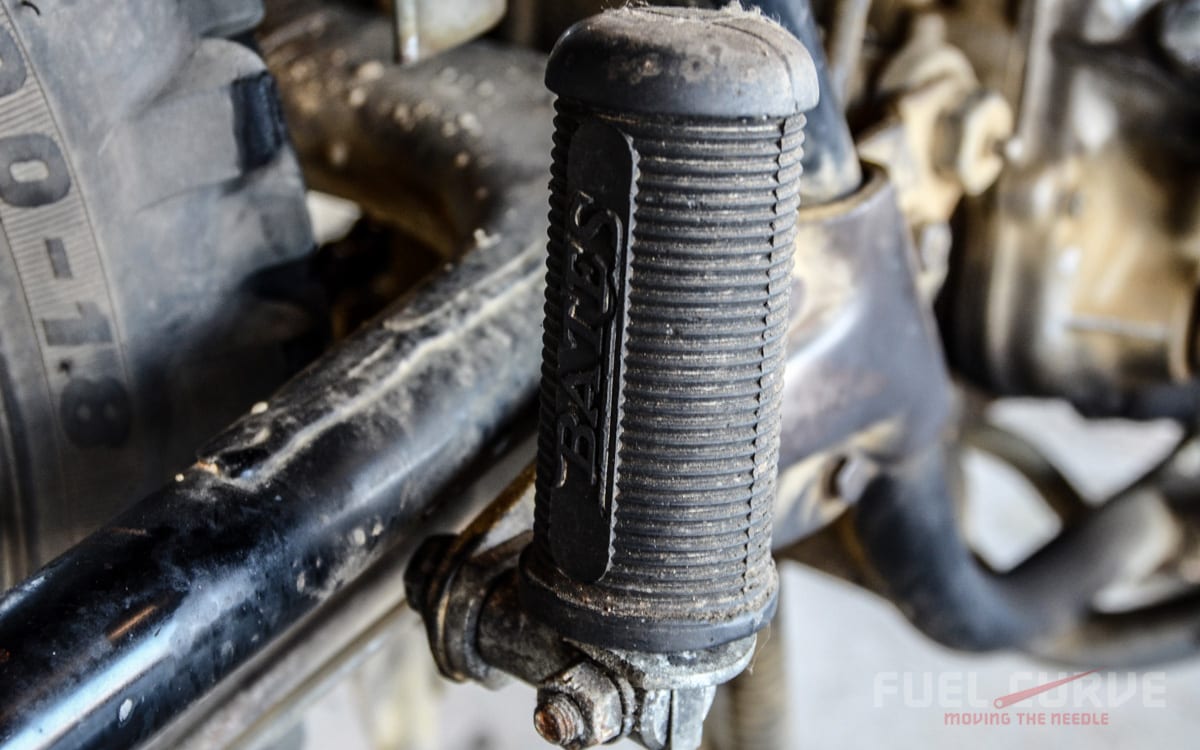
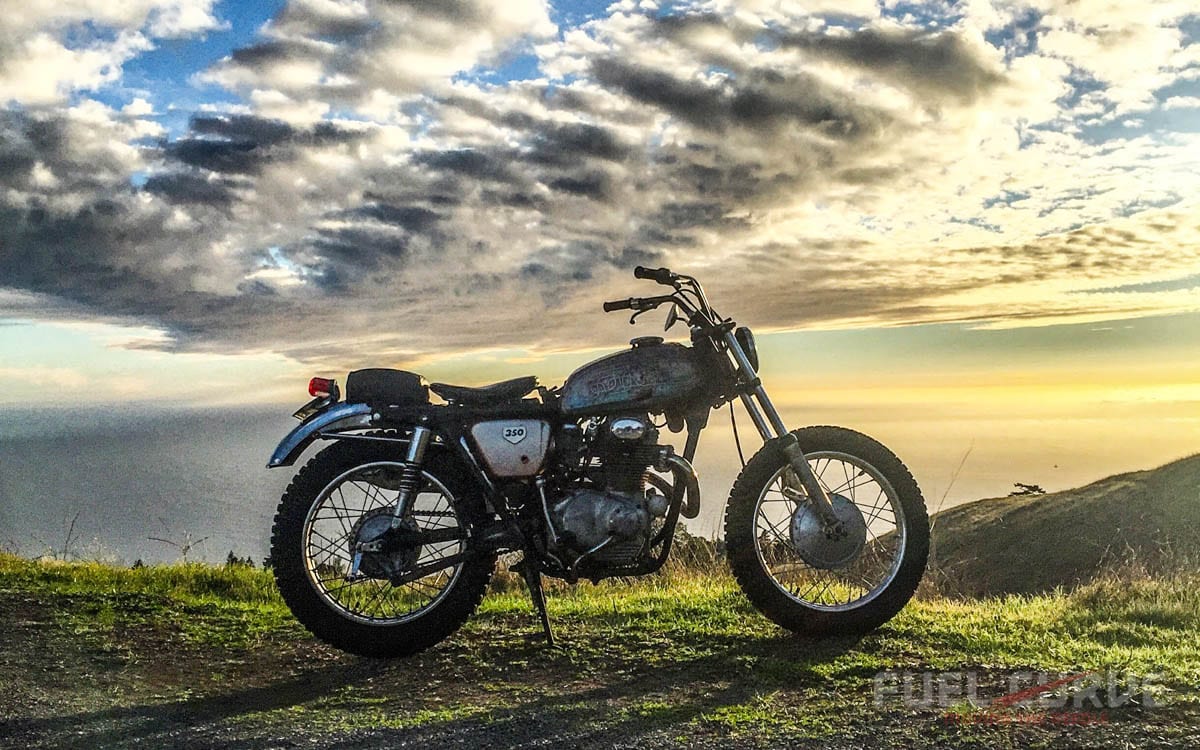 Together we peered into an underground workshop filled with wheels, engines, forks, frames, plugs, pipes and just about every motorcycle part you could imagine. She invited me to pick out whatever I wanted and we could come up with prices. Soon thereafter, my bike had a P-pad, straight pipes and some genuine 7/8ths flat track bars ready to bolt on. The cost? $14. This left me with $3 to buy lunch on the way home. (I later found out her late husband was heavily involved in flat track and motocross racing in the ’60s and ’70s.)
Together we peered into an underground workshop filled with wheels, engines, forks, frames, plugs, pipes and just about every motorcycle part you could imagine. She invited me to pick out whatever I wanted and we could come up with prices. Soon thereafter, my bike had a P-pad, straight pipes and some genuine 7/8ths flat track bars ready to bolt on. The cost? $14. This left me with $3 to buy lunch on the way home. (I later found out her late husband was heavily involved in flat track and motocross racing in the ’60s and ’70s.)
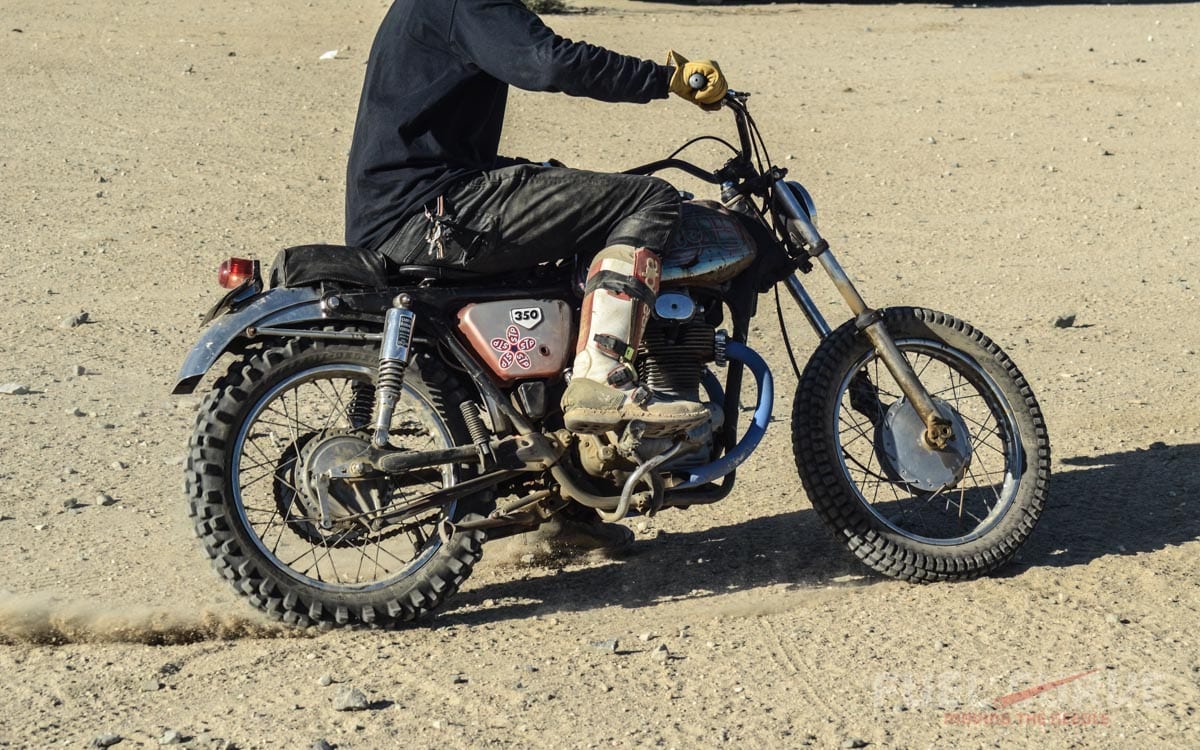 Every piece of this Scrambler has a story to tell and there certainly isn’t enough space to tell them all here. Whether I’m writing a feature story or wrenching on my bikes I’m always digging for history. This CL looks like a survivor, but it wouldn’t be right to call it one. And in a way, that’s what makes it so fun. I modify this bike almost every week, adding this, subtracting that, or just fixing whatever decides to rattle loose. Recently, I bolted on a set of ridiculous rabbit ear handlebars to give it a radical mid-’70s persona. Just like in hot rodding, nothing is ever really finished.
Every piece of this Scrambler has a story to tell and there certainly isn’t enough space to tell them all here. Whether I’m writing a feature story or wrenching on my bikes I’m always digging for history. This CL looks like a survivor, but it wouldn’t be right to call it one. And in a way, that’s what makes it so fun. I modify this bike almost every week, adding this, subtracting that, or just fixing whatever decides to rattle loose. Recently, I bolted on a set of ridiculous rabbit ear handlebars to give it a radical mid-’70s persona. Just like in hot rodding, nothing is ever really finished.
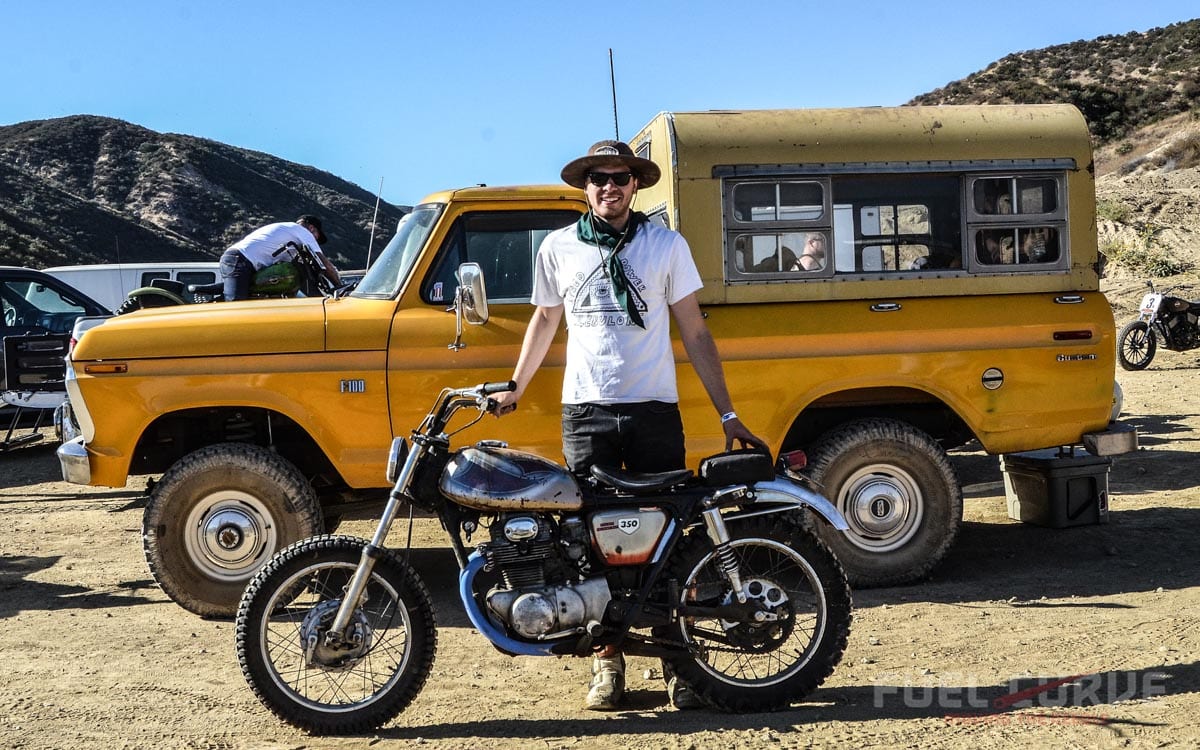
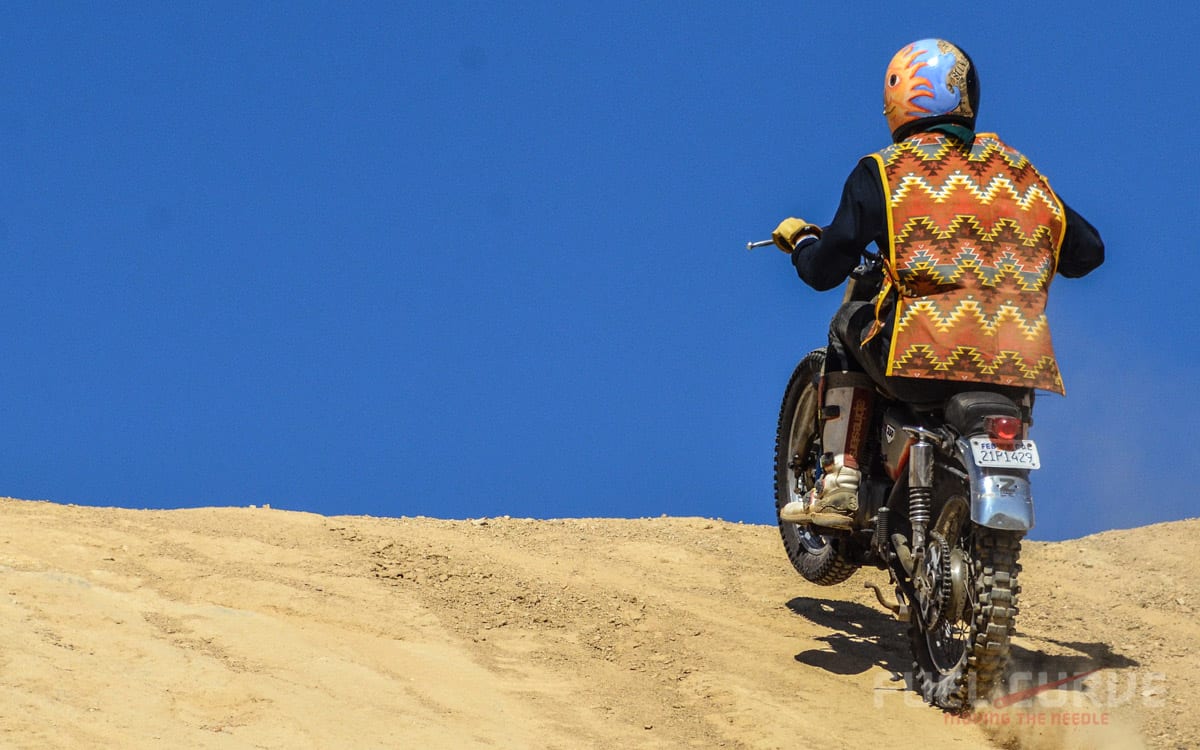 Last month, I was finally able to haul the bike down to San Bernardino for the Hell on Wheels Halloween Hill Climb. After snapping off the front brake lever during practice, I managed to bomb the hill and make it to the top with the parallel twin buzzing and a little bit of daylight beneath the front wheel. As I went over the crest at Glen Helen, I knew the “dirt” portion of my Honda CL350 checklist was complete.
Last month, I was finally able to haul the bike down to San Bernardino for the Hell on Wheels Halloween Hill Climb. After snapping off the front brake lever during practice, I managed to bomb the hill and make it to the top with the parallel twin buzzing and a little bit of daylight beneath the front wheel. As I went over the crest at Glen Helen, I knew the “dirt” portion of my Honda CL350 checklist was complete.
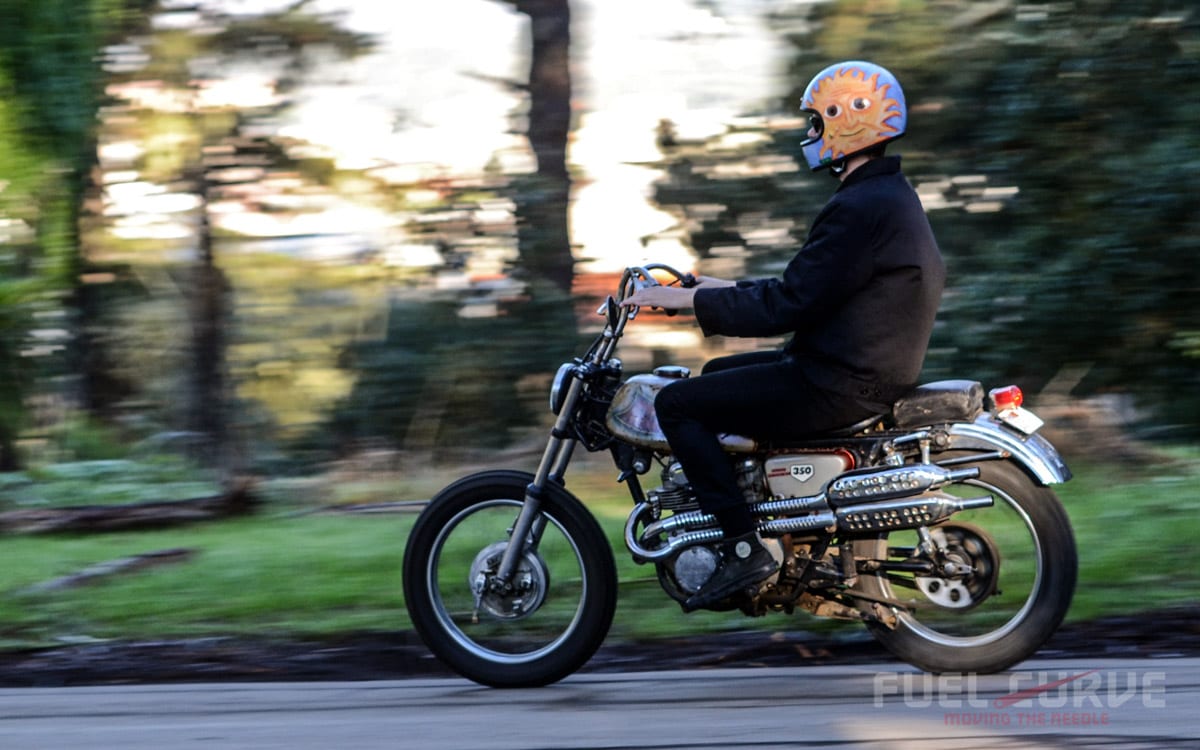 At the end of the day, this is my all-around street bike. I ride it to the grocery store, the hardware store, the hamburger stand and occasionally over to the East Bay. It has been great for dates, lane splitting, garage sale-ing and hauling home everything from plumbing fixtures and records to boxes full of burritos. It’s been the subject of paintings, collages and sparked countless conversations with strangers. It’s funky. It’s fun. And in the end, that’s what “Project Paperweight” is all about.
At the end of the day, this is my all-around street bike. I ride it to the grocery store, the hardware store, the hamburger stand and occasionally over to the East Bay. It has been great for dates, lane splitting, garage sale-ing and hauling home everything from plumbing fixtures and records to boxes full of burritos. It’s been the subject of paintings, collages and sparked countless conversations with strangers. It’s funky. It’s fun. And in the end, that’s what “Project Paperweight” is all about.

